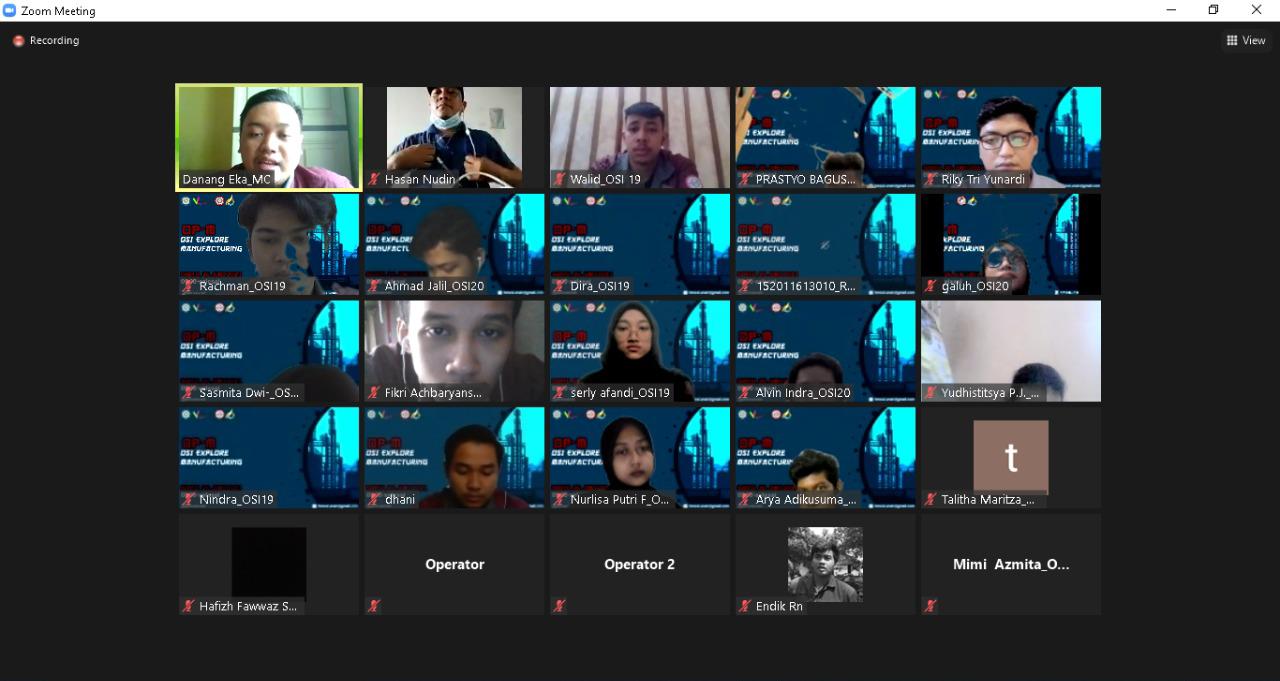UNAIR NEWS – In the world of manufacturing, many branches of the industry operate equipment, machinery, and labor by processing raw materials, spare parts, and other components so that they are ready to use. It inspired HIMA (Students’ Association) of D-III (Three-Year Vocational Study Program) Automation Instrumentation System (OSI), Faculty of Vocational Studies, Universitas Airlangga, to create an OP-M Work Program or “OSI Explore Manufacturing” to provide the students with knowledge in the industrial field. The event was held online via Zoom on Saturday, June 26, 2021, and attended by approximately 50 full-time students.
The Head of the OSI D-III Study Program, Riky Tri Yunardi, S.T., M.T., opened the OP-M event with a short speech and gratitude while hoping, as a representative of the industry, that in the future HMOSI can establish cooperation between the institution and Wings Food.
“I thank all OSI students for holding an event that can provide new knowledge which has never been obtained in lectures. Although we gather virtually, it does not discourage students from getting to know more about the industrial world. It can provide insights to students who will carry out PKL (professional placement) or internships and be ready to work in the industrial world,” he concluded.
The supervisor of PT Karunia Alam Segar, Hasan Nudin, as a speaker of the event, introduced the industrial environment in Mie Sedaap production. 2003 was the beginning of Mie Sedaap products by Wings Food.
“With this OP-M event, we hope that the students can understand the industrial world at PT Karunia Alam Segar and widen their knowledge with my presentation,” he said.
Seven processes of Mie Sedaap production
The first process is mixing. In this process, ingredients such as flour, water, and a special formula are mixed together in a container to mix all the raw materials perfectly.
The second is roll pressing. The roll press machine consists of three parts. Pressing unit (grinder) is used to form noodle sheets with a certain thickness. The slitter unit works as a noodle-sheet cutter. The wave conveyor unit is a tool that forms the noodle strands into curls.
The third process is steaming. Steaming process is the process of cooking the noodles by steaming at a temperature of 100-104 degrees. This stage aims to support the process of gluten gelatinization.
The fourth is frying. At this stage, long strands of noodles are cut and placed into the mould. Then, the noodles are fried at a temperature of 140-160 degrees Celsius for 60 to 120 seconds. This stage aims to reduce the water content in the noodles (about 3-5%). The high temperature of the oil makes the water evaporate quickly and creates fine pores on the noodles’ surface.
The fifth is cooling. The fried noodles are cooled in the cooling aisle to a maximum temperature of 40 degrees Celsius using a fast rotating fan on the conveyor. This process aims to cool the noodles, reduce the oil content, and make the noodles hard and stay fresh (not get moldy easily).
The sixth is the packaging. Packed dried noodles and seasonings are ready to be shipped.
The seventh is product distribution. Noodle products that have been packaged in boxes are stored in warehouses and will be distributed to consumers later.
Hasan Nudin said that many things were used in the production of Mie Sedaap. Sensors such as infrared and temperature sensors are also used. Then, we just have to set the machine, and it works automatically.
“In producing Mie Sedaap, sophisticated and automatic machines are used, except when putting the noodles into the boxes. We still use human power for that.” (*)
Author: Moch Rachman Halim
Editor: Feri Fenoria (YA/AP)





